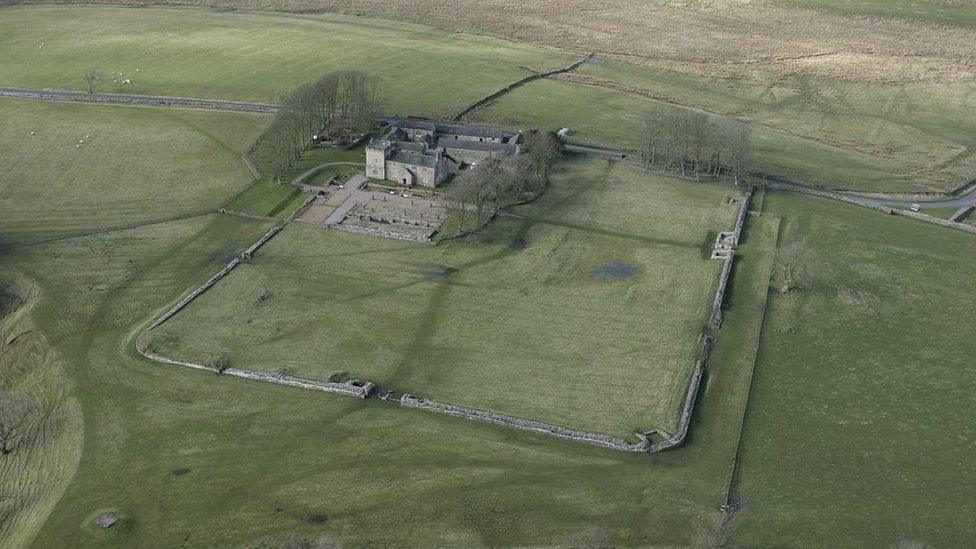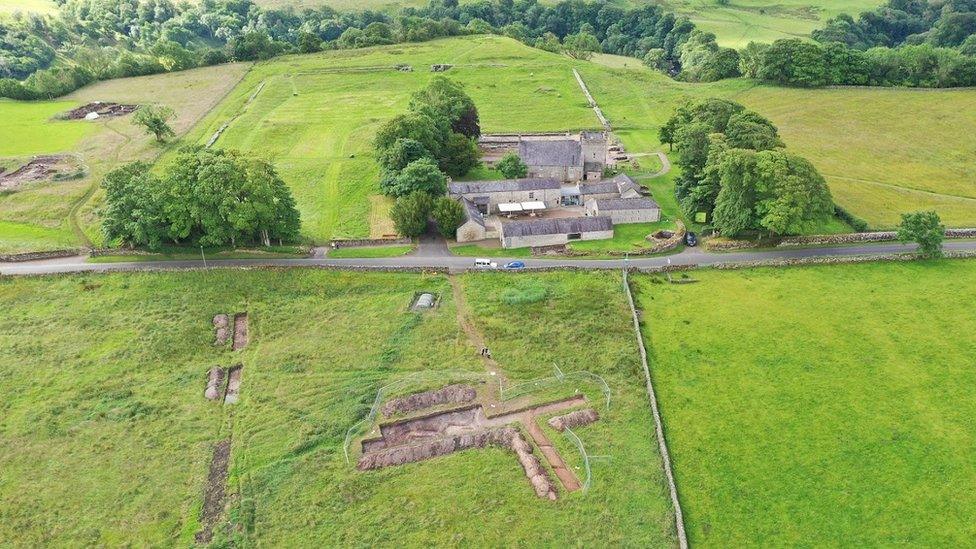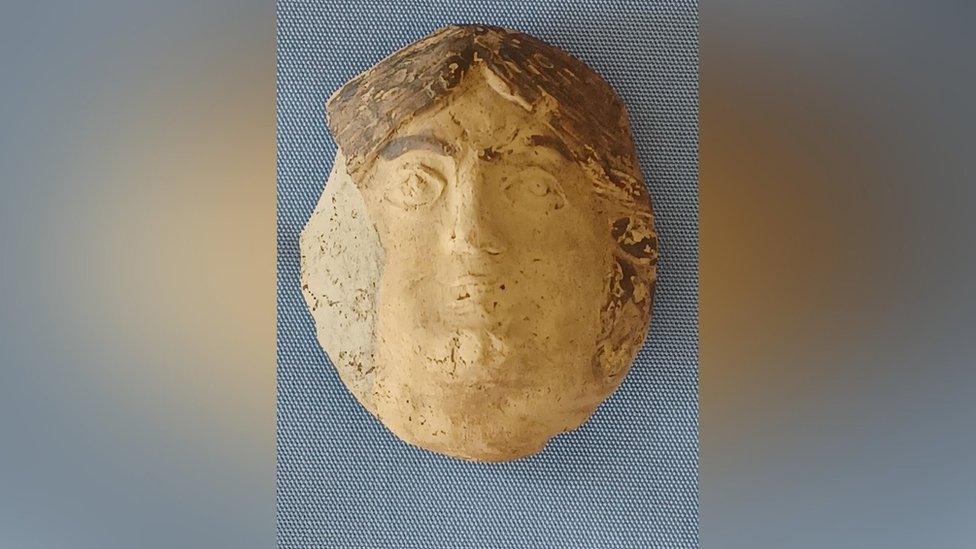Last chance to see Birdoswald Hadrian's Wall Roman bathhouse
- Published

The bathhouse on the eastern side of Birdoswald will be covered again at the end of the summer
Visitors wanting to see the remains of a Roman bathhouse have just a few weeks left before it is covered over again.
This summer's excavation of settlements around Birdoswald Fort on Hadrian's Wall in Cumbria will be the largest since the 1990s.
A previously-unearthed bathhouse said to be a significant find will be reburied at the end of the season for preservation.
Historic England and Newcastle University are investigating the site.
Tony Wilmott, senior archaeologist for Historic England, said previous discoveries had led to a greater knowledge about the towns that grew up either side of the fort, which was built between AD 122 and 138.
About 800 soldiers, originally from the Romania area, were based at the five-acre fort, which sits between modern-day Haltwhistle and Brampton, with towns setting up around it.

About 800 soldiers were based at Birdoswald Roman fort about 1,900 years ago
"These were not just shanty towns but proper settlements with stone buildings," Mr Wilmott said.
The size of the towns was first revealed in the 1990s by geophysical surveys with subsequent digs revealing more.
Mr Wilmott said fields to the north, east and west of the fort were the subject of a five-year project which was now entering its penultimate summer.
One of the most important finds was the remains of a bathhouse on the east side, which was first alluded to by a dig in 1931 and further explored during the current project.
Mr Wilmott said it was a large and obviously important building but it was only last summer when its purpose as a bathhouse was revealed when evidence of the under-floor heating and associated waterworks were discovered.

Evidence of towns and settlements have been found on multiple sides of Birdoswald fort
But the remains will be covered over again at the end of the summer with Mr Wilmott saying visitors had four weeks to go and see it.
"We cannot preserve them in situ," he said, adding it would cost millions of pounds so covering them over was their best hope for conservation.
One of this summer's focuses will be a 60m (197ft) by 10m (33ft) field to the west of the fort and Mr Wilmott said he was excited about what could be unearthed.
"We are following up on a survey which seems to show an open area with buildings around it that looks like a marketplace," he said.
Mr Wilmott said he had been working at Birdoswald since 1987 with some 21% of the fort having been examined.

Multiple Roman artefacts have been found including this face painted on a pot, possibly that of Empress Julia Domna who died in 217
"It's a dream to work here," he said, adding the archaeology students from Newcastle University assisting with the dig also appreciated the site's importance and the opportunity it offered to learn more.
Since the project began, more than 200 students have taken part and discoveries have included large amounts of domestic pottery, hobnails used to protect the soles of footwear, semi-precious jasper and glass stones used in rings and to seal documents.
Ian Haynes, Newcastle University Professor of Archaeology, said the dig would be a "career highlight" for students and staff, adding: "Birdoswald always has something surprising to teach us."
Visitors can take a guided tour of the dig, external and meet some of the archaeologists until 7 July.

Follow BBC North East & Cumbria on Twitter, external, Facebook, external and Instagram, external. Send your story ideas to northeastandcumbria@bbc.co.uk, external.